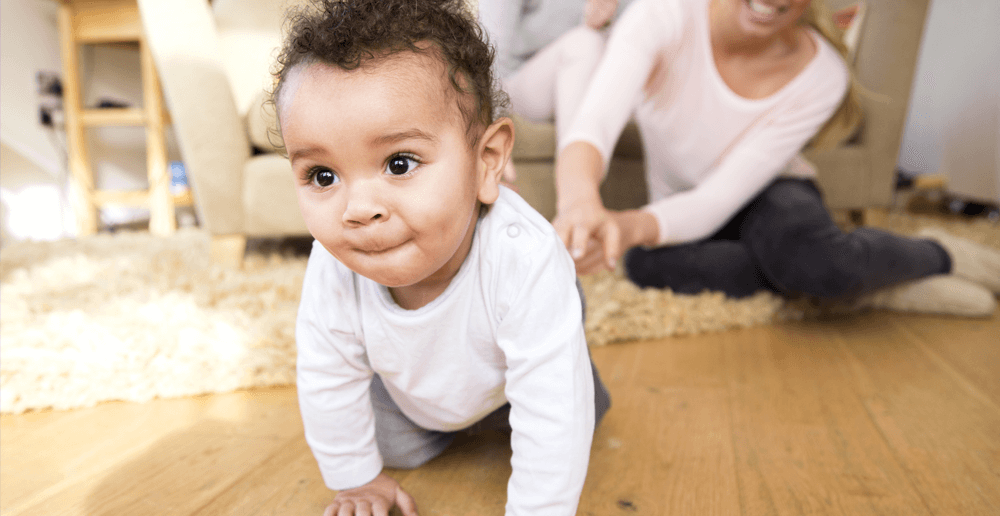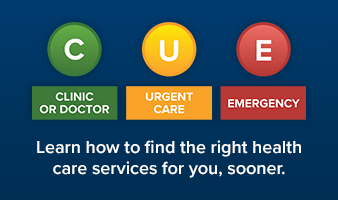Keeping one step ahead of your child to prevent falls

By Dr. Lynne Warda
Winnipeg Regional Health Authority
Published Monday, November 15, 2021
With November being Falls Prevention Month, you might be surprised to learn that falls are the most common reason for infants and toddlers to visit the emergency department for an injury. Falls are also the leading cause of injury-related hospitalization in young children. Serious falls can result in head injuries or broken bones.
The reasons why children fall depends on their age and development and are often a surprise to parents.
Let's start first with newborns. Many people don't realize that the most serious cause of fall-injury in newborns is when the caregiver falls while carrying their baby or when the baby is accidentally dropped. It's more common than you think and can even happen in the hospital. To prevent a fall, parents can avoid carrying other items including phones when carrying the baby, use a handrail on the stairs, and avoid slippery socks or slippers.
In my own practice, I’ve seen too many cases of infants – some only a few weeks of age – who have managed to wriggle off a surface like a change table, sofa, bed or table. While it is true that a baby can't roll on their own until they’re three to four months of age, they are nevertheless surprisingly wriggly and can fall from an elevated surface. Keeping one hand on your baby is good advice.
Many falls can occur when using baby equipment. For example, I have seen babies fall when parents carry them in a car seat without fastening the straps. If the parent slips, especially going down stairs, the baby can fly out of the seat, resulting in injury.
Baby slings and other carriers can also lead to falls since they can change a caregiver's center of gravity, and obscure their vision as they walk. Babies can fall when being put in and taken out of the sling and when the caregiver bends over. Parents should practice putting the sling on before using it with baby. To prevent falls, parents can hold onto baby when bending over, and place baby to one side of the body so they can see their feet, stairs and any tripping hazards.
Baby walkers caused so many injuries in the past that they are now banned in Canada. It is illegal to sell one second hand or to import one from another country. Activity centres without wheels are a better choice.
Children grow and develop quickly. Babies learn to roll, crawl, walk and climb. Each new ability helps babies learn about their bodies and explore the world. As children move into the toddler stage and beyond, their added mobility requires smarter (and quicker) supervision and some additional precautions. Parents can help avoid serious injuries by staying one step ahead of their child and anticipating their developing skills.
We don't want to bubble-wrap young children; instead adults need to create safer play areas so that children can play independently and develop their skills. As they learn to crawl, stand and walk, falls will happen; this is a natural part of their development, and generally not a concern.
Toddlers love to climb but don't have the maturity to recognize if something is dangerous. This is why its safest to keep furniture away from windows, balconies and other potential hazards. Many parents are surprised to learn that window screens do not prevent falls. In upper floors or apartment blocks, safety devices such window bars and locks can be used, but be sure you can open the window in case of a fire or other emergency.
Outdoor play is important for children's physical and social development. Natural play spaces engage children in play using the environment rather than built equipment. Most serious falls in playgrounds are due to the height of the equipment and can be reduced by matching toddlers to age-appropriate equipment. Lifting children onto surfaces or play equipment they can't access on their own does not help them develop climbing skills and can put them at risk.
Falls that result in scraped knees and road rash are expected when playing, growing and learning. However, a serious injury can happen in the blink of an eye. Parents, grandparents and caregivers can help prevent serious falls by learning more about ways to keep children safe. Visit:
- Healthy Parenting Winnipeg healthyparentingwinnipeg.ca
- Staying On Your Feet preventfalls.ca
Dr. Lynne Warda is Associate Professor Department of Pediatrics and Child Health at the University of Manitoba and Medical Consultant, Injury Prevention and Child Health for the Winnipeg Regional Health Authority's Public Health Program.
Tips for preventing falls in the home A fall can happen in a blink of an eye. The good news is that you can help prevent falls and injuries if you know what puts your child at risk. When caring for newborns:
When caring for toddlers capable of climbing:
At the playground:
For more tips, visit healthyparentingwinnipeg.ca or preventfalls.ca. |

